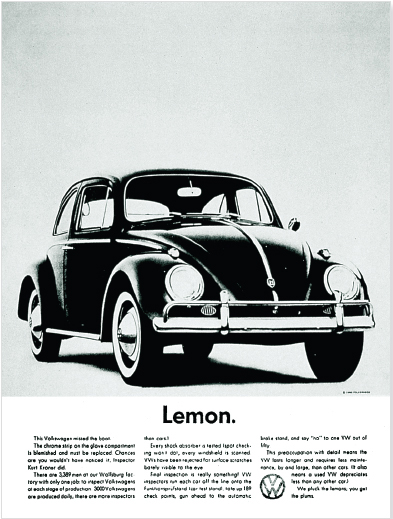Ad Agencies Develop a Distinctive Structure
Printed Page 330
Regardless of type (mega or boutique), most ad agencies have a similar organizational structure comprising four main functions: account planning, creative development, media buying, and account management.
Account Planning
The account planner’s role is to develop an effective advertising strategy by combining the views of the client, creative team, and consumers. Consumers’ views are the most difficult to understand, so account planners coordinate market research to assess consumers’ behaviors and attitudes regarding particular products long before the agency develops any ads. Researchers might test consumers’ preferences regarding a wide range of things—including possible names for a new product, size of text in a possible print ad, and potential features of a product in development.
Agencies have increasingly employed scientific methods to study consumer behavior. The earliest type of market research, demographics, mainly documented audience members’ age, gender, occupation, ethnicity, education, and income—and then looked for patterns between these characteristics and consumers’ purchasing choices. (For example, what types of clothing and skin-care products do high-earning women over forty years of age generally purchase?) Today, demographic data have become even more specific, enabling marketers to identify consumers’ economic status and geographic location (usually by zip code) and compare their consumption behaviors, lifestyles, and attitudes.

By the 1960s and 1970s, advertisers and agencies began using psychographics, a research approach that attempts to categorize consumers according to their attitudes, beliefs, interests, and motivations. Psychographic analysis often relies on focus groups, a small-group interview technique in which a moderator leads a discussion about a product or an issue, usually with six to twelve participants. For instance, a focus group moderator may ask participants what they think of several possible names for a new brand of beer, why they like or dislike particular names proposed, and what role beer plays in their lives.
In 1978, this research grew even more sophisticated when Strategic Business Insights (formerly SRI International) developed its Values and Lifestyles (VALS) strategy. Using questionnaires, VALS researchers today divide respondents into eight types—thinkers, innovators, achievers, strivers, survivors, believers, makers, experiencers—associated with certain behaviors and preferences of interest to clients. For example, an automaker considering which vehicle models to advertise in which types of TV shows might be told that achievers watch a lot of sports programs and prefer luxury cars, while thinkers enjoy TV dramas and documentaries and like minivans and hybrids.
VALS research assumes that not every product suits every consumer, and encourages advertisers to pitch various sales slants to particular market niches. VALS (and similar research techniques) ultimately provides advertisers with microscopic details suggesting which consumers may be most likely to buy which products, but it also stereotypes people as consumers, reduced to eight manageable categories.
Creative Development
Teams of writers and artists—many of whom regard ads as a commercial art form—make up the nerve center of the advertising business. They outline the rough sketches for print and online ads and then develop the words and graphics. For radio, “creatives” prepare a working script, generating ideas for everything from choosing the narrator’s voice to determining background sound effects. For television, they develop a storyboard, a roughly drawn comic-strip version showing each scene in the potential ad. For digital media, the creative team may develop Web sites, interactive tools, games, downloads, social media campaigns, and viral marketing—short videos or other forms of content that they hope will swiftly capture an ever-widening circle of attention as users share the content with friends online or by word of mouth.
Creatives often lock horns with researchers over what will appeal most to consumers and how best to influence target markets. However, both sides acknowledge that they can’t predict with absolute certainty which ads will succeed, especially in a competitive economy where eight out of ten new products introduced to market typically fail. Agencies say ads are at their best if they slowly create and then hold brand-name identities by associating certain products over time with quality and reliability in the minds of consumers. Famous brands like Coca-Cola, Budweiser, Toyota, and Microsoft spend millions of dollars each year just to maintain their brand-name aura. However, some economists maintain that much of the money spent on advertising, especially to promote new products, is ultimately wasted, since it just encourages consumers to change from one well-known brand name to another.

Media Buying
An ad agency’s media coordination department is staffed by media planners and media buyers: people who choose and purchase the types of media that are best suited to carry a client’s ads and reach the targeted audience. For instance, a company like Procter & Gamble, always among the world’s top purchasers of advertising, displays its hundreds of major brands—most of them household products like Crest toothpaste, Ivory soap, and Pampers diapers—on TV shows viewed primarily by women, who still do the majority of household cleaning.
Client companies usually pay an ad agency a commission or fee for its work. But they might also add incentive clauses to their contracts with the agency. For example, they may pay a higher fee if sales reach a specific target after an ad is aired—or pay a lower fee if sales fall short of the target. Incentive clauses can sometimes encourage agencies to conduct repetitive saturation advertising, by which they inundate a variety of media with ads aimed at target audiences. The initial Miller Lite beer campaign (“Tastes great, less filling”), which used humor and retired athletes to reach its male audience, ran from 1973 to 1991 and became one of the most successful saturation campaigns in media history.
Of course, such efforts are expensive. And indeed, the cost of advertising—especially on network television—increases each year. The Super Bowl remains the most expensive program for purchasing television advertising, but running a thirty-second ad during a national prime-time TV show can cost from $100,000 to more than $600,000 depending on the program’s popularity and ratings. Cost thus strongly influences where and when media buyers place ads.
Account Management
An agency’s account executives are responsible for bringing in new business. For example, if a potential new client has requested bids for an upcoming ad campaign, the account executive might coordinate the presentation of a proposed campaign, complete with cost estimates. Account executives also manage relationships with established clients, including overseeing project budgets, market research, creative work, and media planning done on their campaigns. Account executives thus function as liaisons between the client firm and the agency’s creative team.
The advertising business is volatile, and account-management departments are especially vulnerable to upheavals. Clients routinely conduct account reviews—assessing an existing ad agency’s campaign or inviting several new agencies to submit new campaign strategies. If they’re dissatisfied, they may switch agencies, something that has occurred more and more frequently since the late 1980s.2